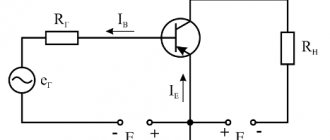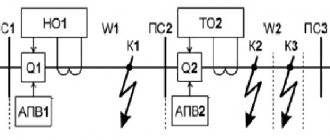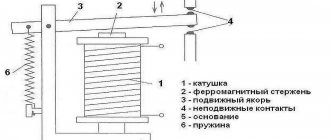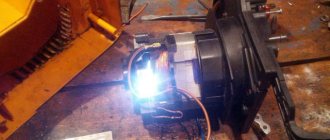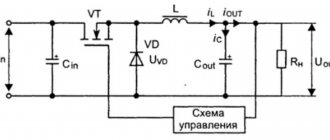EV-X7 - a banned “magnetic” motorcycle
To begin with, it is worth saying that the development of this motorcycle is based on the work of the Ukrainian inventor F.I. Svintitsky.
Back in 1997, he patented a magnetic motor that could “jump over the dead center”: one of the stumbling blocks to the development of such motors. Svintitsky used the well-known model of the German Wankel, who was unable to completely solve the “360 degree” problem. To pass the “dead point”, Svintitsky used a battery connected at the right moment. Due to the fact that the battery energy was spent only at the moment of passing the “ill-fated degree”, the engine turned out to be super efficient and economical.
The developer received a patent for his device (Russian, No. 2086784) and tried to implement the invention first at home and then abroad. As one would expect, practically no one was interested in his developments: the inventor was even denied the opportunity to hold exhibitions and demonstrate the engine. It is difficult to say for sure whether an “oil mafia conspiracy” or broken technology is to blame: there is practically no accurate information, just rumors. they are just rumors.
But in 2003, Japanese developers presented the electric motorcycle EV-X7 “Sumo” (the name comes from the phrase “super motor”), which aroused considerable interest: in terms of characteristics, ordinary gasoline bikes were seven times inferior to the “Sumo”. The “fuel” of the unusual apparatus was a magnetic field. And it was the developments of F.I. Sventitsky that were used in the unusual motorcycle.
Of course, technology did not stand still; the engine was modified and improved by the Japanese inventor Minato. In the EV-X7, the magnetic motor was located in the rear wheel, in the front there was another one - an electric one, which was used for initial acceleration, and only then the main magnetic one was “connected”. At the same time, both engines operated absolutely silently.
On the charge of one battery, very modest in size and weight, the electric motorcycle was capable of traveling almost two hundred kilometers at a decent speed - up to one hundred and fifty km/h. The development was carried out by Axle Corporation under the patronage of Honda, and another major company expressed interest in such a transport. The presentation caused a stir and... that, in general, was all: since 2007, nothing more has been heard about Sumo.
Journalist Fulford Benjamin, having conducted an independent investigation, came to a very shocking result - Japanese companies were forced to shut down further developments by order of the Government, or more precisely, the Minister of Finance Takinaka. He was forced to issue such an order as a result of direct threats from Israel and the United States to use geophysical weapons if Japan did not submit to the policies of the IMF and the Federal Reserve.
Whether or not to believe this investigation is up to each individual. But the “disappearance” of a very interesting device, which, thanks to the improvement and development of technology, could have even more fantastic characteristics by 2019, continues to interest many supporters of free and alternative energy.
If you liked the material, please like and subscribe to the channel. It is not difficult and free, but it is very important for the development of NM. We also need reposts on social networks!
Source
American companies that produce electric motorcycles
Of the companies producing them in series, the most famous are four American companies:
The power of their electric motorcycles is quite sufficient and is respectively equal to 86, 54, 54 and 163 hp.
The speed they can reach: 230,153,177 and 240 km. They all charge in about four to six hours from a regular outlet. The fast charging unit, which allows you to reduce this time to an hour, is Bremmo and Zero. But the most famous manufacturer of such equipment is Japan.
Japanese company Kawasaki Heavy Industries producing electric bikes
Kawasaki Heavy Industries is a world-famous manufacturer of Kawasaki motorcycles, one of the four most famous manufacturers of wonderful bikes - Yamaha, Honda, Suzuki, Kawasaki. Provided that the company succeeds in implementing the declared technology, the company’s products will leave its fourth place in the ranking in order to “move higher.” But, besides this, Kawasaki, having a number of technological advantages over other manufacturers, is working on the latest technologies for electric bikes (so far in strict secrecy).
The world's first electric motorcycle SUMO with a magnetic motor from Japan
But while Kawasaki is keeping secrets, another company presented a new product in the world of electric motorcycles, which, compared to its gasoline counterpart, is seven times more efficient. The “sensational” news was reported twelve years ago (in 2013). There are a lot of people who want to buy it, but it’s too early to even think about mass production—it’s prohibited.
A motorcycle, unknown in history, with a magnetic engine, was invented in Japan. There is no need to refuel it at all, because the magnetic field serves as fuel for it. Our compatriot, inventor F.I. Svintitsky, described the principle of its operation in his works.
And the first patent for the invention was issued in Russia in 1997. But to this day, this amazing invention has not received support in its homeland. The domestic auto industry was not interested in it, and private manufacturers left it unnoticed.
How to make a magnetic motor
And now we will tell you a little about how it can be done. Let’s say right away that you won’t find normal instructions on the Internet. If they are presented, then the model simply does not assemble. There are more sensible instructions, but there the efficiency is too low or an error has been made. By assembling magnetic motors using all these instructions, people were unable to make a normal model. You must understand this, it is clearly not beneficial for someone.
It seems to us that it is best to look at the patent of the Ukrainian scientist F.I. Svintitsky under number No. 2086784. You can view the patent on the official website, where all patents in Russia are approved. Here is the link to it https://ru-patent.info/20/85-89/2086784.html, here you will find detailed instructions on how to make it. Therefore, if you come up with the idea of assembling a magnetic motor yourself, take all the information from this source. Only here it has been verified (although this is not a fact; they could have made a mistake on purpose). But, in any case, it is better to believe the patent itself; it is not simply issued.
We dispel the myth about the engine that will destroy modern gasoline auto production
There is no question that in the foreseeable future automotive equipment will go into production because of the supposedly “terrible” threat that engines of this type pose for Russian auto giants. In this regard, we can say that technology does not stand still, but the energy crisis that frightens us so much is in many ways created artificially.
How to make a flower from a ribbon master class
December 13, 2021 admin
DIY ribbon flowers step by step instructions with photos
How to make a flower from a ribbon – Stylish and fashionable clothing store
Hairstyles on IriXpiX: flowers made of satin ribbons decoration
DIY ribbon flower for beginners
Ribbon roses
How to Make a Flower Bow from Ribbon Ribbon Bow Tutorial Natalidoma – AgaClip – Make Your Video Clips
Ribbon flowers. Discussion on LiveInternet - Russian Online Diary Service
Make a topiary with your own hands step by step photo
flowers from ribbons step by step photo Photo archive
Making flowers with ribbons yourself
HOW TO EASILY MAKE A FLOWER FROM RIBBON MASTER CLASS FLOWERS FROM ORGANSA – AgaClip – Make Your Video Clips
flowers from the ribbon Women's site Girls. Beauty and health, love and sex. Work and career. Sport. Pregnancy and children
Evde Kumastan Gul Yap?m? Kendin Yap
DIY satin ribbon bows for September 1
Ribbon Flowers Decor Shop
Master class Kanzashi.Ribbon flowers.Hair clip.Rose Kanzashi.Flat flower Rose Kanzashi – AgaClip – Make Your Video Clips
How to make roses from ribbons for beginners
How to make ribbons from beads Beading
Schemes for making flowers from ribbons
DIY Kanzashi flowers made from satin ribbons – AgaClip – Make Your Video Clips
Leave a comment
How does a motorcycle with a magnetic motor work - the principle of operation?
The Japanese improved the Minato wheel, creating an engine based on it, which was installed on the SUMO motorcycle, which is distinguished by the fact that it has a drive on both wheels, one of which is driven by an electric motor, and the other by a magnetic one.
To accelerate, the motorcycle uses an electric motor with circuitry that generates pulses that control the position of the magnet. After which, it can reach speeds of up to 150 km/h.
It turns out that compared to conventional motorcycles, it is tens of times more economical.
What are the advantages and disadvantages of actually working magnetic motors?
Advantages:
- What is a “neodymium magnet” and what is it used for?
- Full autonomy, fuel economy, the ability to use available means to organize the engine in any desired place;
- A powerful device using neodymium magnets is capable of providing energy to a living space up to 10 VKt and above;
- The gravitational engine is capable of working until it is completely worn out and even at the last stage of work it can produce the maximum amount of energy.
Flaws:
- The magnetic field can negatively affect human health, especially the space (jet) engine is susceptible to this factor;
- Despite the positive results of the experiments, most models are not able to work under normal conditions;
- Even after purchasing a ready-made motor, it can be very difficult to connect it;
- If you decide to buy a magnetic pulse or piston motor, then be prepared for the fact that its price will be greatly inflated.
The operation of a magnetic motor is the pure truth and it is real, the main thing is to correctly calculate the power of the magnets.
For hundreds of years, humanity has been trying to create an engine that will run forever. Now this question is especially relevant when the planet is inevitably moving towards an energy crisis. Of course, it may never come, but regardless of this, people still need to move away from their usual energy sources and a magnetic engine is a great option.
How do other countries want to ban the production of magnetic motors and why?
She made such a proposal thirty years ago. She began to pursue a more independent policy under Finance Minister Takinaki, realizing that the country would not need such a huge amount of gas and oil in the future if we continued to develop these technologies.
But other countries also understood this, so blackmail was immediately launched against Japan , which was investigated by journalist Fulford Benjamin. The Minister of Finance received threats from Israel, including the use of geophysical weapons, if the country did not submit to IMF policy.
Apparently, Japan never fully complied with the demands of the world bankers, as a result of which Toyota's enterprises were completely destroyed due to a terrible disaster. It seems that geophysical weapons were used; there is no other reason to explain the terrible tragedy at the Fukushima nuclear power plant.
Source
The history of the perpetual motion machine
The first mention of the creation of such a device appeared in India in the 7th century, but the first practical attempts to create it appeared in the 8th century in Europe. Naturally, the creation of such a device would significantly accelerate the development of energy science.
In those days, such a power unit could not only lift various loads, but also turn mills, as well as water pumps. In the 20th century, a significant discovery occurred, which gave impetus to the creation of a power unit - the discovery of a permanent magnet with the subsequent study of its capabilities.
The motor model based on it was supposed to work for an unlimited amount of time, which is why it was called eternal. But be that as it may, nothing lasts forever, since any part or detail can malfunction, therefore, the word “eternally” must only be understood as meaning that it must work without interruption, without implying any costs, including fuel.
Now it is impossible to accurately determine the creator of the first perpetual mechanism, which was based on magnets. Naturally, it is very different from the modern one, but there are some opinions that the first mention of a power unit using magnets is in the treatise of Bhskara Acharya, a mathematician from India.
The first information about the appearance of such a device in Europe appeared in the 13th century. The information came from Villard d'Honnecourt, an eminent engineer and architect. After his death, the inventor left his notebook to his descendants, which contained various drawings of not only structures, but also mechanisms for lifting loads and the actual first device using magnets, which vaguely resembles a perpetual motion machine.
Magnetic unipolar Tesla motor
The great scientist known for his many discoveries, Nikola Tesla, achieved significant success in this area. Among scientists, the scientist’s device received a slightly different name - the Tesla unipolar generator.
It is worth noting that the first research in this area was carried out by Faraday, but despite the fact that he created a prototype with a similar operating principle as Tesla later did, stability and efficiency left much to be desired. The word “unipolar” means that in the device circuit a cylindrical, disk or ring conductor is located between the poles of a permanent magnet.
The official patent presented the following scheme, in which there is a design with 2 shafts on which 2 pairs of magnets are installed: one pair creates a conditionally negative field, and the other pair creates a positive one. Between these magnets there are generating conductors (unipolar disks), which are connected to each other using a metal tape, which in fact can be used not only to rotate the disk, but also as a conductor.
Tesla is known for a large number of useful inventions.
Engine Minato
Another excellent option for such a mechanism, in which the energy of magnets is used for uninterrupted autonomous operation, is an engine that has long been in production, despite the fact that it was developed only 30 years ago, by the Japanese inventor Kohei Minato.
Experts note a high level of noiselessness and, at the same time, efficiency. According to its creator, a self-rotating magnetic motor like this one has an efficiency of over 300%.
Magnetic V-Gate motor from Muammer Yildiz - and it works!
Remember when NM talked about the simplest magnetic V-Gate motor? (if not, here you go: Simple but working magnetic V-Gate Magnet Motor
).
Muammer Yildiz, a Turkish inventor, built his own version of such a motor and conducted several demonstrations in 2015 for staff and students at the University of Delft in the Netherlands. And a little earlier (since 2010) in my home country - in universities and on television.
Of course, it can be said that the news about magnetic motors has spread all over the world and the Internet, with all sorts of installations and pseudo-inventors who say that they are the "center of all science" and only they have discovered a configuration in which "magnets can become monopolar." And only they made the engine work, which performs useful mechanical work autonomously.
At a Dutch university, Muammer Yildiz's machine ran for just over 10 minutes, spinning a fan, before it stopped. The wind speed was measured and it was concluded that the power of Muammer Yildiz's magnetic motor was about 250 W.
To dispel suspicions about the battery hidden in the device and to prove that its design is not just another “counterfeit,” Muammer Yildiz gave the students his magnetic motor for detailed analysis and study. The Turkish inventor conducted another similar demonstration on May 12, 2015 in Germany.
The Yildiz motor consists of three parts: an outer stator, a rotor and an inner stator. The location of the magnets on the internal stator and rotor is of particular interest and attention. Apparently, it is precisely this arrangement that leads to a phenomenal and paradoxical difference in the strength of magnetic fields and imbalance of the rotor. Which must rotate, eliminating the imbalance.
Types and principles of operation
There is the concept of perpetual motion machines of the first order and the second. The first order is devices that produce energy on their own, from the air, the second type is engines that need to receive energy, it can be wind, sun rays, water, etc., and they convert it into electricity. According to the first law of thermodynamics, both of these theories are impossible, but many scientists do not agree with this statement, who began the development of second-order perpetual motion machines operating on the energy of a magnetic field.
Photo - Dudyshev magnetic engine
A huge number of scientists at all times worked on the development of a “perpetual motion machine”; the greatest contribution to the development of the theory of a magnetic engine was made by Nikola Tesla, Nikolai Lazarev, Vasily Shkondin, and the variants of Lorenz, Howard Johnson, Minato and Perendeva are also well known.
Photo - Magnetic Lorentz motor
Each of them has its own technology, but they are all based on a magnetic field that is formed around the source. It is worth mentioning that engines do not exist in principle, because... magnets lose their abilities after approximately 300-400 years.
The simplest is considered to be a homemade anti- gravity magnetic Lorentz engine . It works by using two differently charged disks that are connected to a power source. The disks are half placed in a hemispherical magnetic screen, the field of which begins to gently rotate them. Such a superconductor very easily pushes the MP out of itself.
The simplest Tesla asynchronous electromagnetic motor is based on the principle of a rotating magnetic field, and is capable of producing electricity from its energy. An insulated metal plate is placed as high above ground level as possible. Another metal plate is placed in the ground. A wire is passed through a metal plate on one side of the capacitor and the next conductor goes from the base of the plate to the other side of the capacitor. The opposite pole of the capacitor, being connected to ground, is used as a reservoir for storing negative energy charges.
Photo - Tesla Magnetic Motor
Lazarev's rotary ring is so far considered the only working VD2, in addition, it is easy to reproduce, you can assemble it with your own hands at home, using available tools. The photo shows a diagram of a simple Lazarev ring engine:
Photo - Koltsar Lazareva
The diagram shows that the container is divided into two parts by a special porous partition; Lazarev himself used a ceramic disk for this. A tube is installed in this disk, and the container is filled with liquid. For the experiment, you can even pour plain water, but it is advisable to use a volatile solution, for example, gasoline.
The work is carried out as follows: using a partition, the solution enters the lower part of the container, and due to pressure, it moves upward through the tube. So far this is only perpetual motion, independent of external factors. In order to build a perpetual motion machine, you need to place a wheel under the dripping liquid. Based on this technology, the simplest self-rotating magnetic electric motor of constant motion was created; the patent was registered to one Russian company. You need to install a wheel with blades under the dropper, and place magnets directly on them. Due to the resulting magnetic field, the wheel will begin to rotate faster, water will be pumped faster and a constant magnetic field will be formed.
- What is a magnet: its types, properties and scope of application.
The Shkondin linear motor produced a kind of revolution in progress. This device is very simple in design, but at the same time incredibly powerful and productive. Its motor is called a wheel-in-wheel and is mainly used in the modern transportation industry. According to reviews, a motorcycle with a Shkodin engine can travel 100 kilometers on a couple of liters of gasoline. The magnetic system works for complete repulsion. In the wheel-in-wheel system, there are paired coils, inside of which another coil is connected in series, they form a double pair, which has different magnetic fields, due to which they move in different directions and a control valve. An autonomous motor can be installed on a car; no one will be surprised by a fuel-free motorcycle with a magnetic motor; devices with such a coil are often used for a bicycle or wheelchair. You can buy a ready-made device on the Internet for 15,000 rubles (made in China), the V-Gate starter is especially popular.
Photo – Shkondina Engine
The Perendeva Alternate Motor is a device that operates solely through magnets. Two circles are used - static and dynamic, with magnets placed on each of them in equal sequence. Due to the self-repelling free force, the inner circle rotates endlessly. This system has been widely used in providing independent energy in households and industries.
Photo – Perendeva Engine
All of the inventions listed above are under development; modern scientists continue to improve them and look for the ideal option for developing a second-order perpetual motion machine.
In addition to the listed devices, the Alekseenko vortex engine, Bauman, Dudyshev and Stirling apparatuses are also popular among modern researchers.


